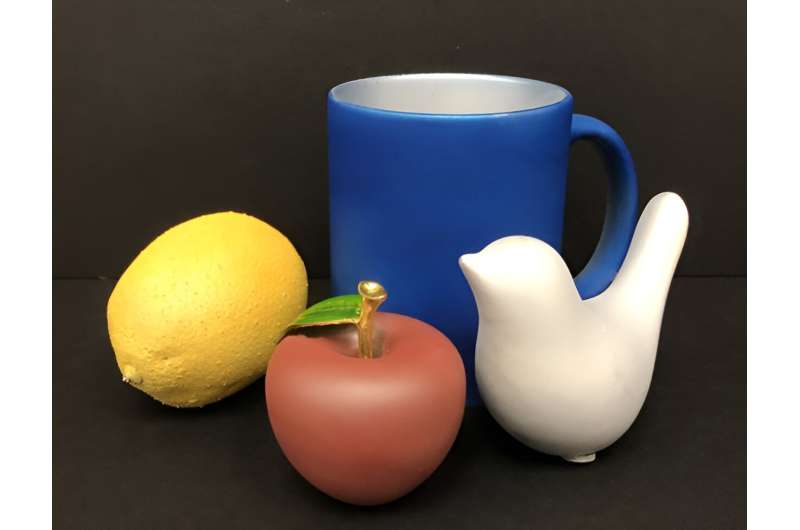This article has been reviewed according to Science X's editorial process and policies. Editors have highlighted the following attributes while ensuring the content's credibility:
fact-checked
peer-reviewed publication
trusted source
proofread
New paint gives extra insulation, saving on energy, costs, and carbon emissions

Stanford University scientists have invented a new kind of paint that can keep homes and other buildings cooler in the summer and warmer in the winter, significantly reducing energy use, costs, and greenhouse gas emissions.
Space heating and cooling accounts for about 13% of global energy use and about 11% of greenhouse gas emissions. The new paints reduced the energy used for heating by about 36% in experiments using artificial, cold environments, according to a study published today in the Proceedings of the National Academy of Sciences. They reduced the energy needed for cooling by almost 21% in artificial warm conditions. In simulations of a typical mid-rise apartment building in different climate zones across the United States with the new paint on exterior walls and roofs, total heating, ventilation, and air conditioning energy use declined 7.4% over the course of a year.
"Energy and emissions from heating are forecast to continue to fall due to energy efficiency gains, but air conditioning use is rising, especially in developing economies in a warming world," said the study's senior author, Yi Cui, professor of materials science and engineering, of energy science and engineering, and of photon science at SLAC National Accelerator Laboratory.
"For both heating and air conditioning we must reduce energy and emissions globally to meet our zero-emissions goals," said Cui, who directs the Precourt Institute for Energy and the Sustainability Accelerator, both within the Stanford Doerr School of Sustainability. "How to reduce heat exchange between human living and work spaces and their surroundings is getting more attention, and new materials for enhanced insulation—like low-emissivity films for windows—are in demand."
A colorful solution
Current low-emissivity paints usually have a metallic silver or gray color, the aesthetics of which limit their use. The newly invented paints have two layers applied separately: an infrared reflective bottom layer using aluminum flakes and an ultrathin, infrared transparent upper layer using inorganic nanoparticles that comes in a wide range of colors. The infrared spectrum of sunlight causes 49% of natural heating of the planet when it is absorbed by surfaces.
For keeping heat out, the paint can be applied to exterior walls and roofs. Most of this infrared light passes through the color layer of the new paints, reflects off the lower layer, and passes back out as light, not being absorbed by the building materials as heat. To keep heat inside, the paints are applied to interior walls, where again, the lower layer reflects the infrared waves that transfer energy across space and are invisible to the human eye.
Specifically, up to about 80% of high mid-infrared light is reflected by the paints, doing most of the work of keeping heat inside during cold weather and outside during hot weather. The color layer also reflects some near-infrared light, enhancing the reduction in air conditioning. The research team tested their paints in white, blue, red, yellow, green, orange, purple, and dark gray. They were 10 times better than conventional paints in the same colors at reflecting high mid-infrared light, the researchers found.
Not just for buildings
The paints can be applied beyond buildings to improve energy efficiencies elsewhere. For example, they could cover trucks and train cars used for refrigerated transportation, in which cooling costs can take up to half the transportation budget.
"Both layers can be sprayed onto assorted surfaces of various shapes and materials providing an extra thermal barrier in many different situations," said Yucan Peng, co-lead author of the study, who completed her Ph.D. in materials science at Stanford in 2020 and is now a postdoctoral scholar in Stanford's Geballe Laboratory for Advanced Materials.
The researchers also evaluated how practical their paints would be in various situations. Both layers are water-repellant, which should enhance stability in humid environments. Painted surfaces can be cleaned easily with wet cloth or water flushing, the researchers report. Furthermore, the paints' performance and aesthetics were not diminished after continuous exposure for one week to high temperature (176 degrees Fahrenheit), low temperature (-320.5 degrees Fahrenheit), as well as high acidic and low acidic environments. The paint actually increased the use of air conditioning slightly in some U.S. cities, but no location showed an increased total HVAC load.
"Our team continues to work on refining the paint formulations for practical applications," said the study's other co-lead author, Jian-Cheng Lai, a postdoctoral scholar advised by Zhenan Bao, professor of chemical engineering. "For example, water-based solutions would be more environmentally friendly than the organic solvents we used. That could facilitate the commercialization of the paints."
More information: Yucan Peng et al, Colorful low-emissivity paints for space heating and cooling energy savings, Proceedings of the National Academy of Sciences (2023). DOI: 10.1073/pnas.2300856120
Journal information: Proceedings of the National Academy of Sciences
Provided by Stanford University





















